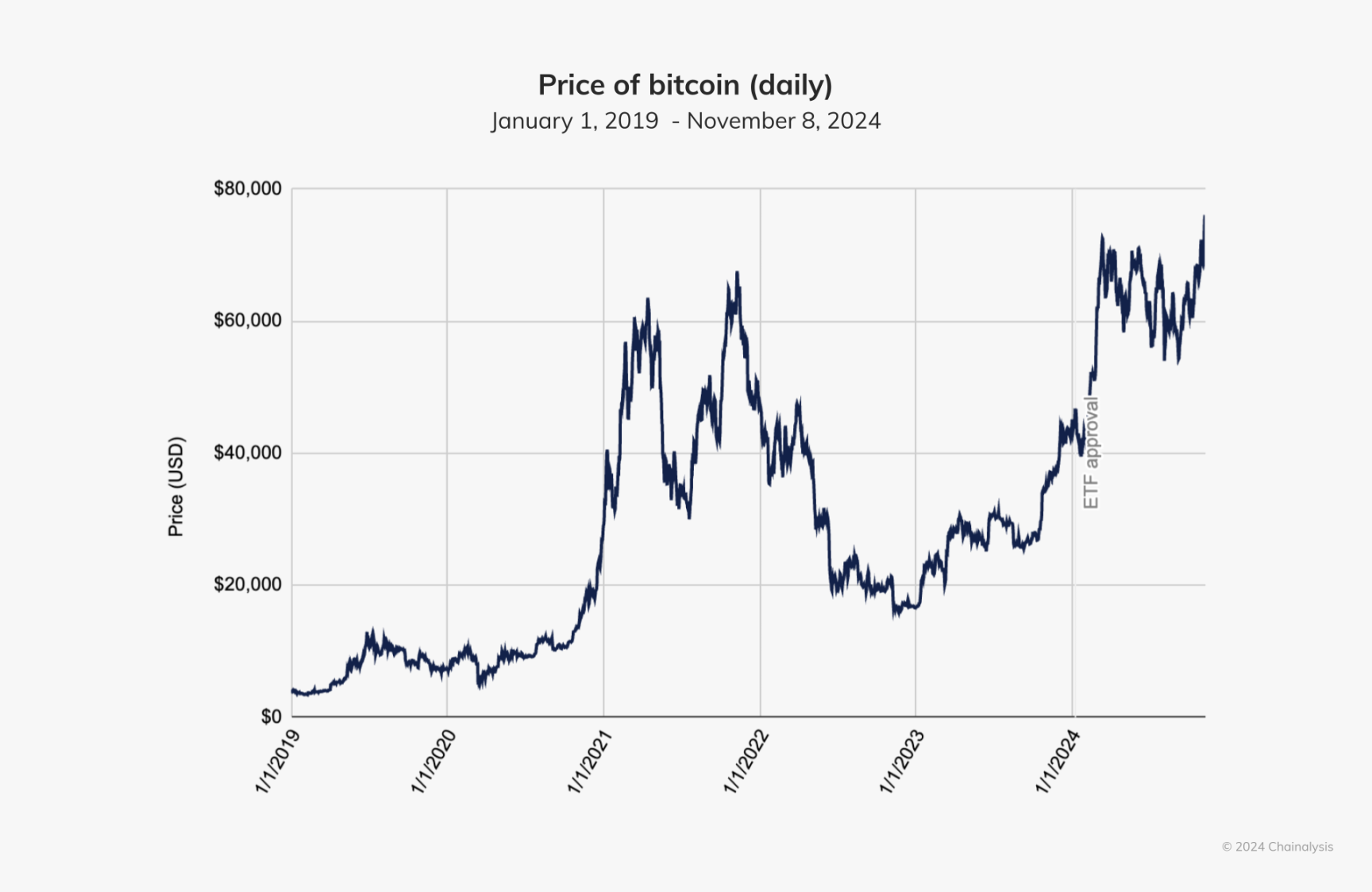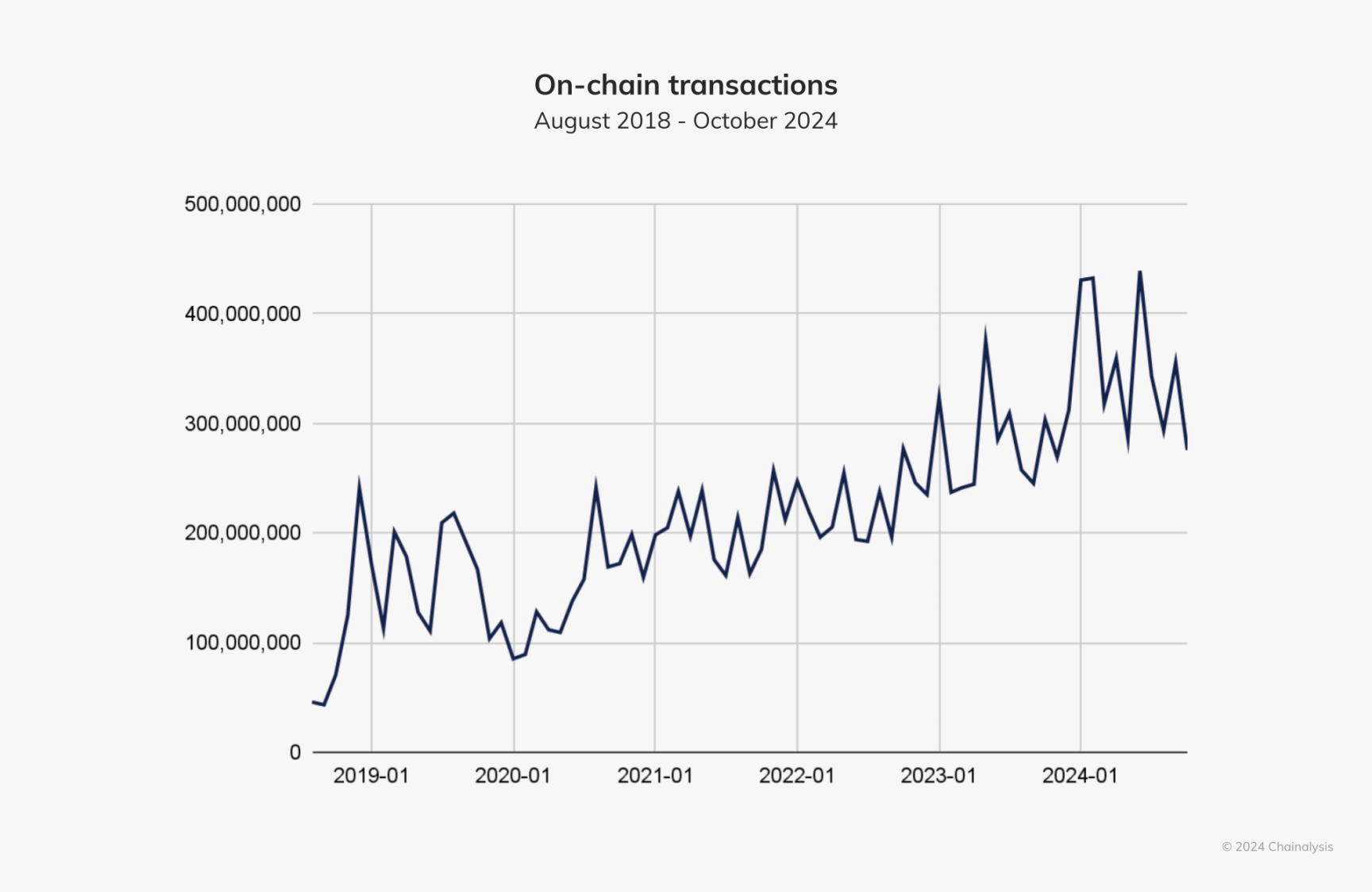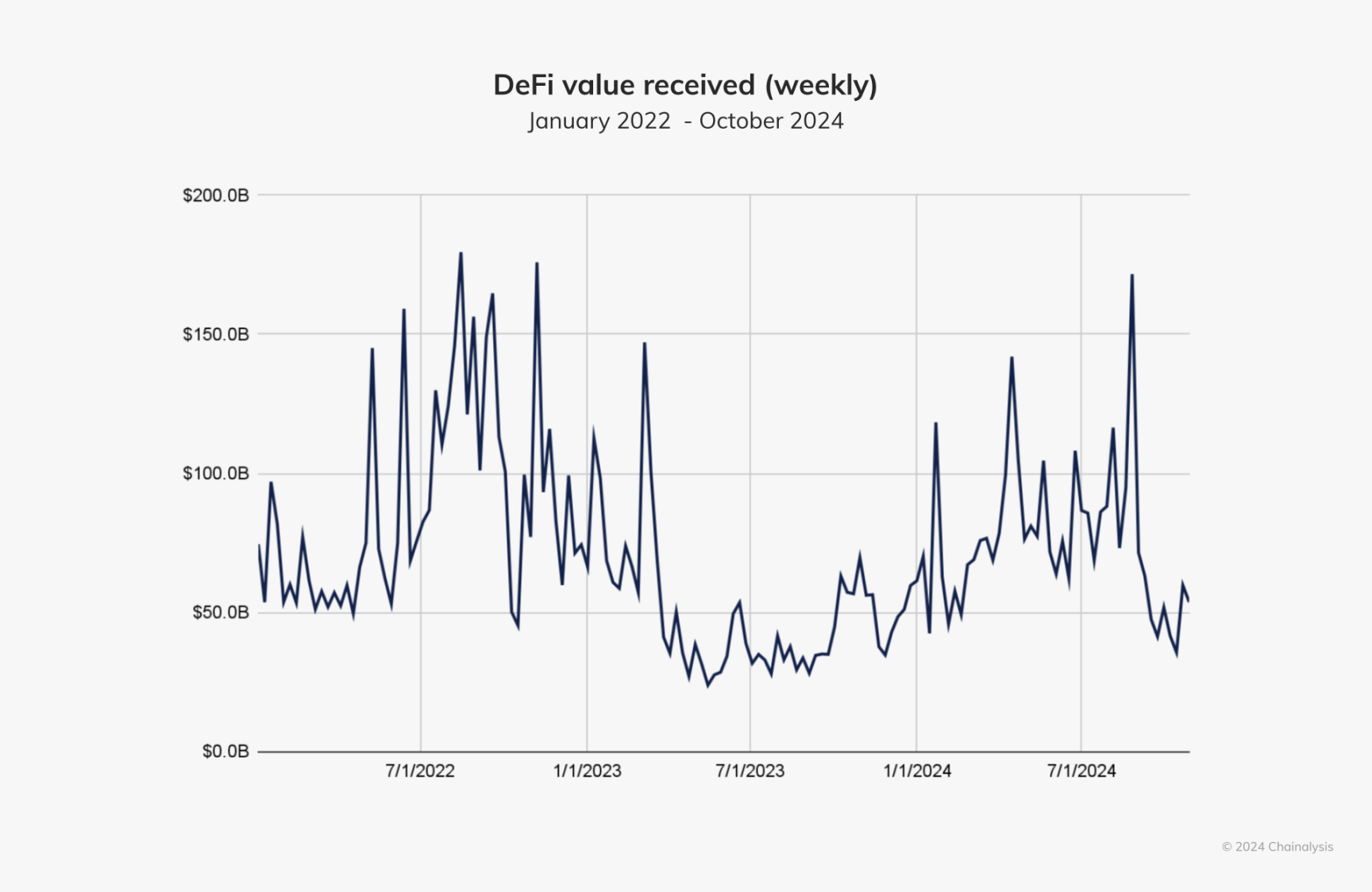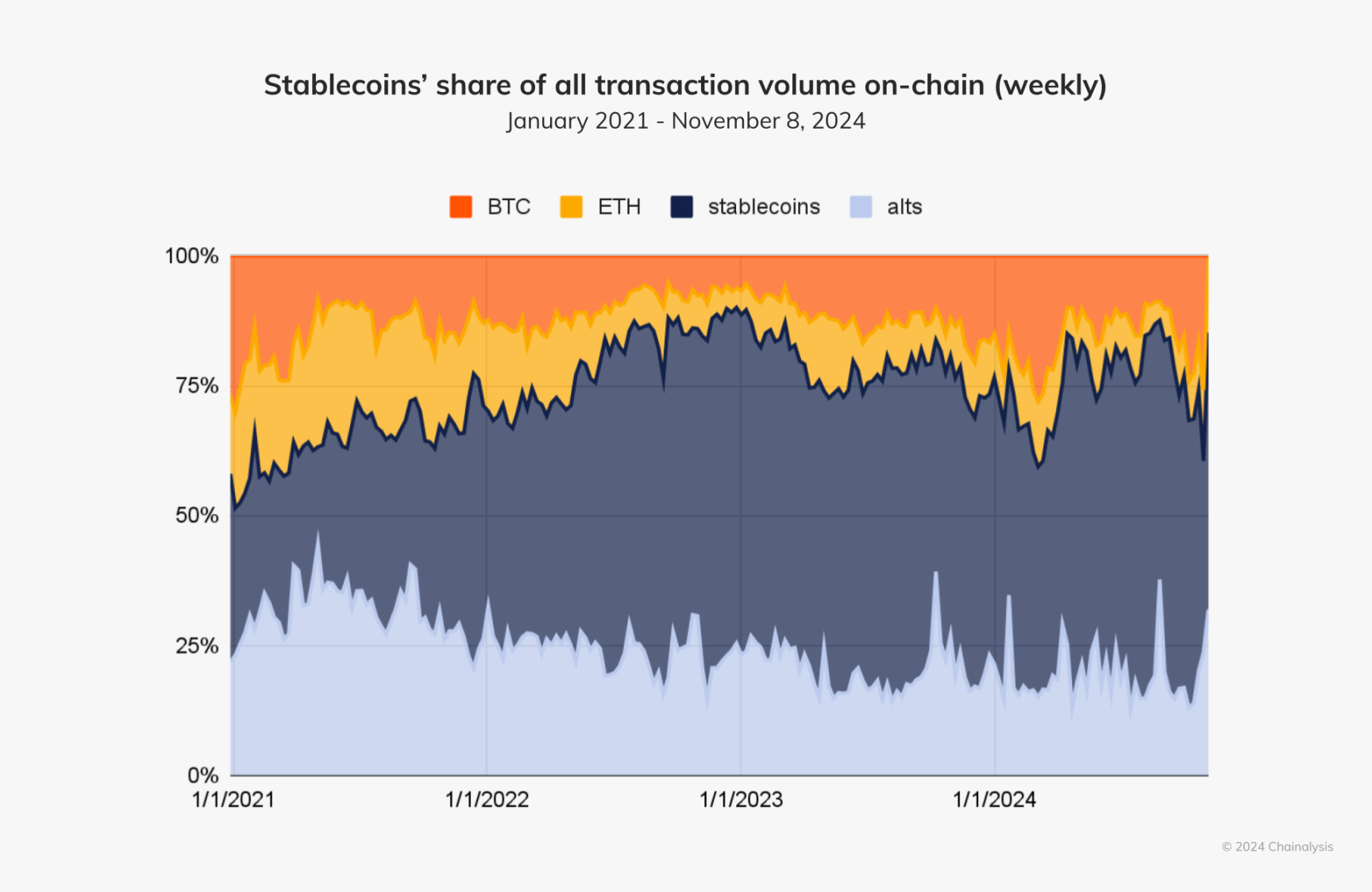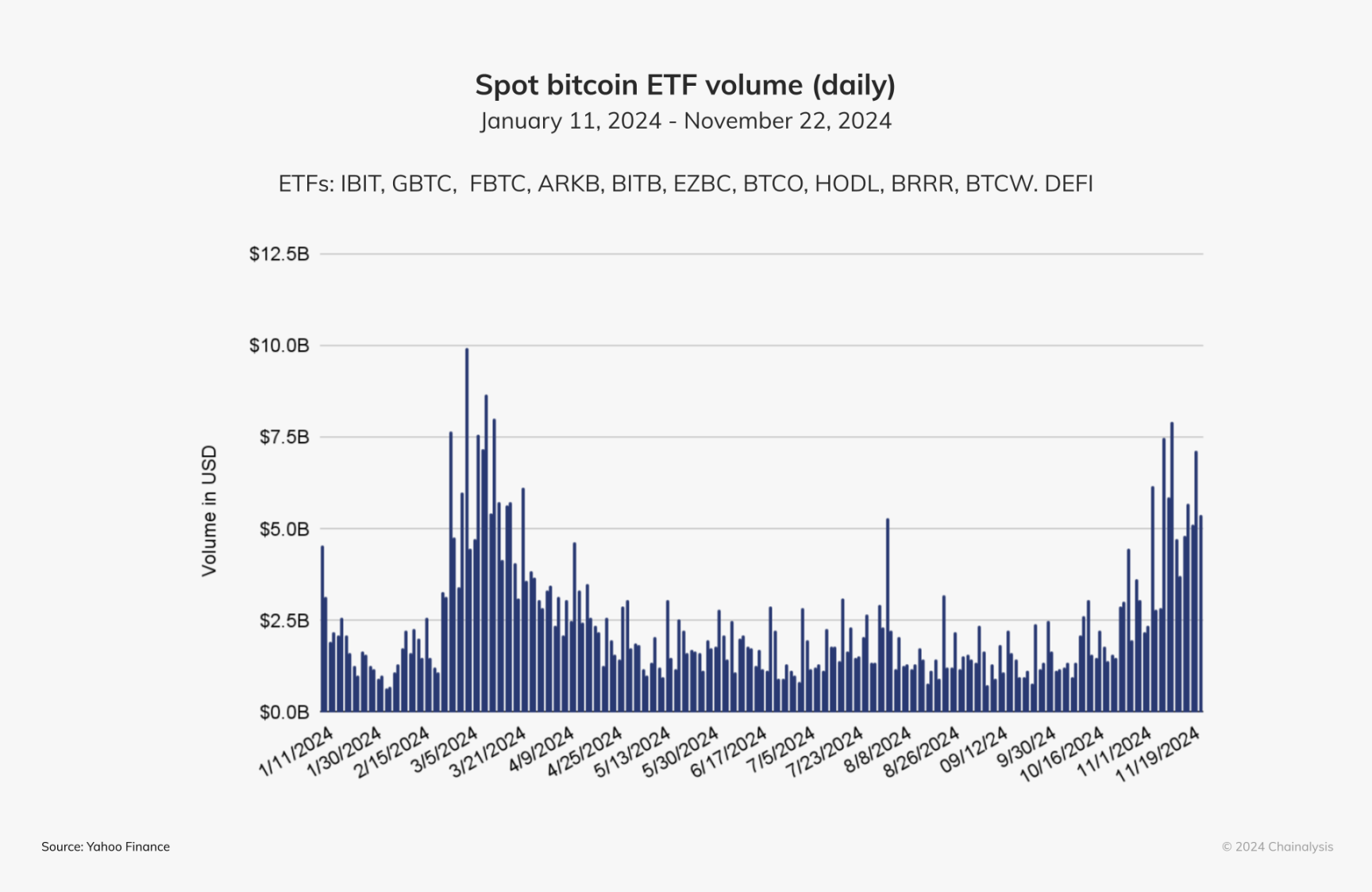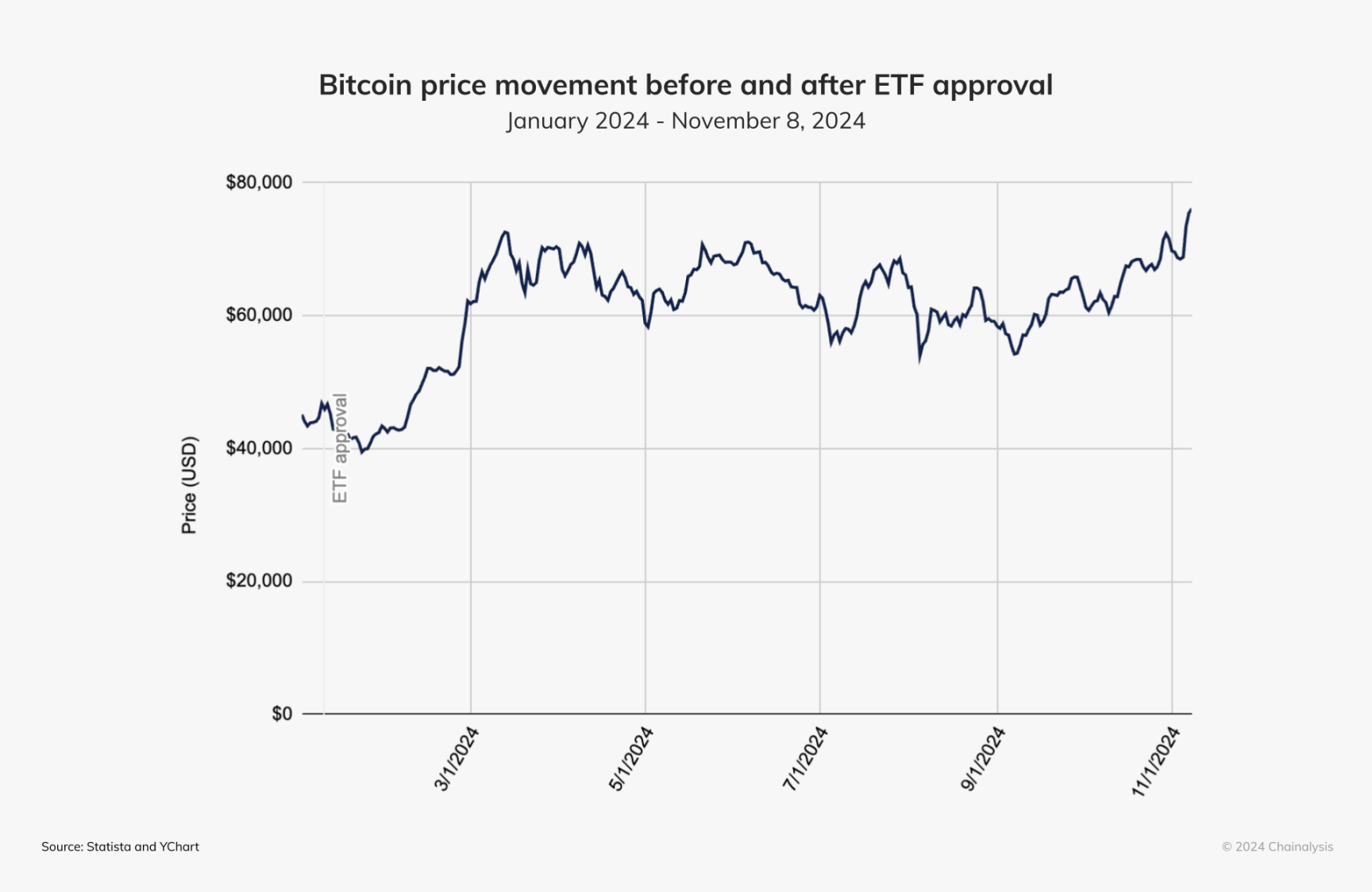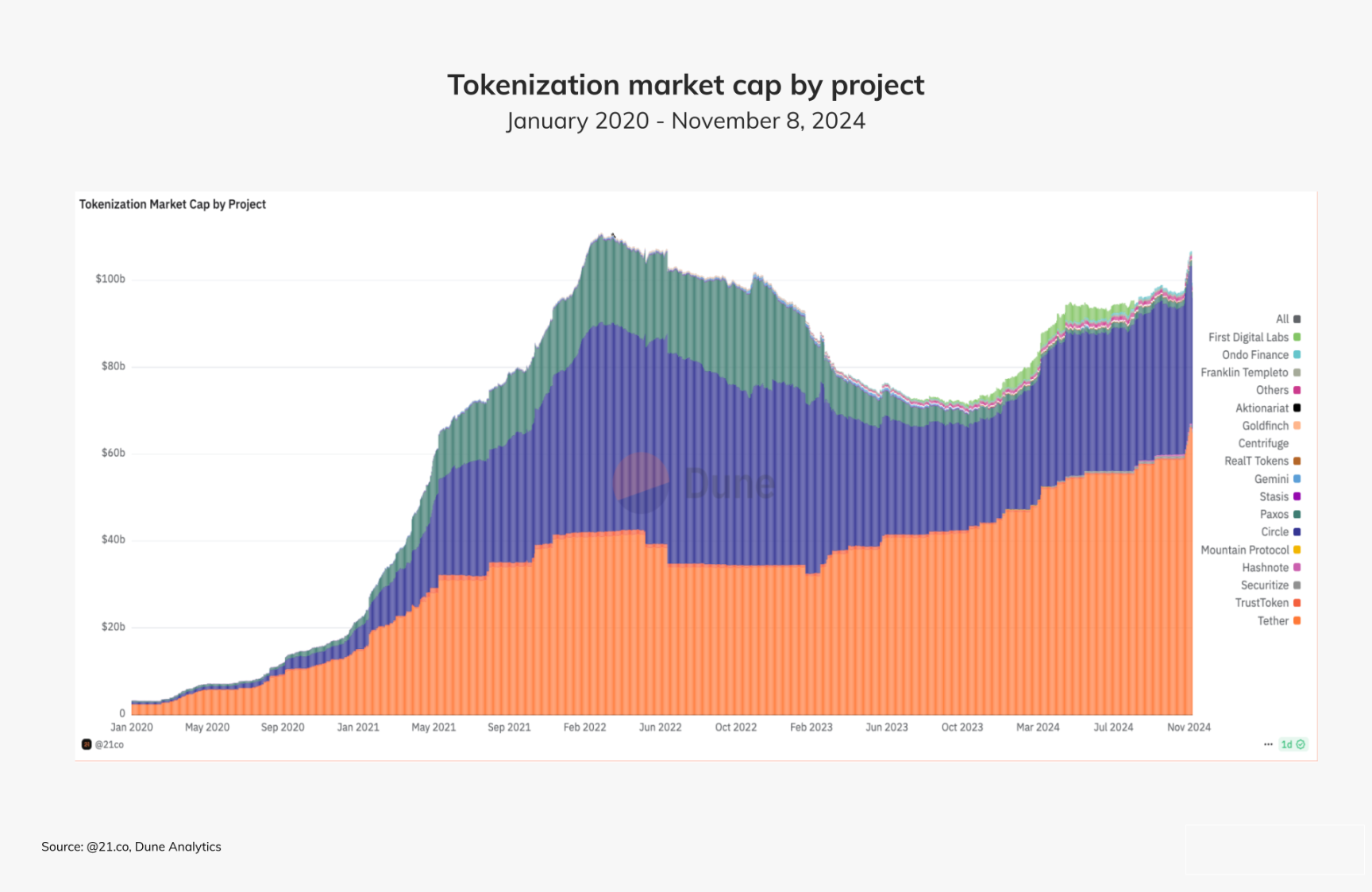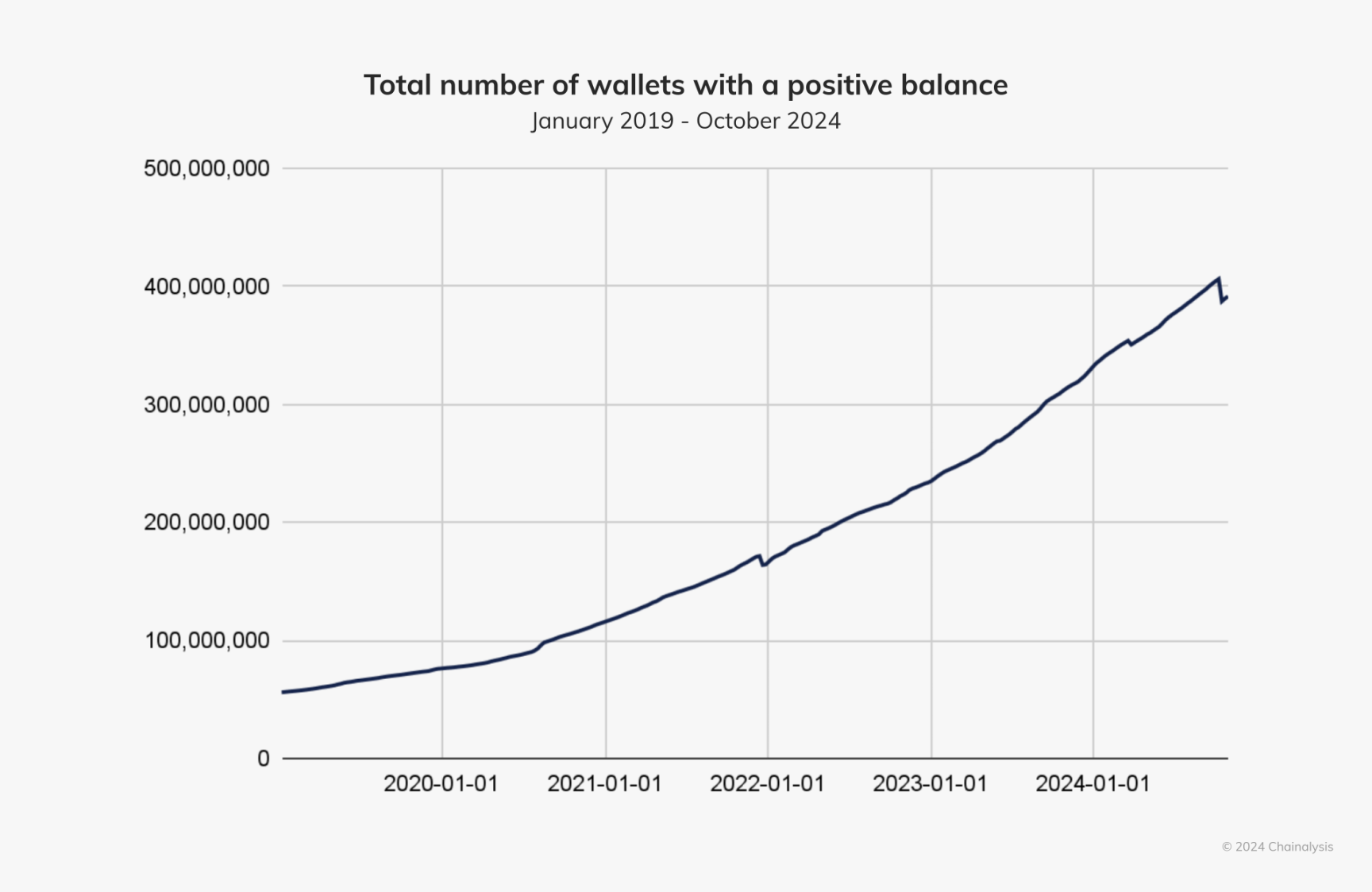Chainalysis report: Stablecoins, TradFi and RWA are leading the next wave of Web3
Original author: Chainalysis
Orijinal çeviri: 1912212.eth, Foresight News
The kriptocurrency industry has entered a new phase of maturity, driven by increasing global adoption, continued innovation, and deeper integration with traditional financial systems.
This year, BTC hit new all-time highs in March and December, reflecting huge demand. At the same time, DeFis position in the global economy is constantly consolidating, and global capital inflows are also approaching new highs. In addition, traditional finance (TradFi) has become active again, and funds have poured into areas such as stablecoins and crypto exchange-traded products (ETP) markets, indicating that cryptocurrencies are quietly fulfilling their promise to reshape the global financial infrastructure.
This is not just another market cycle, but a pivotal moment for cryptocurrencies.
Atypical bull market
At the end of 2023, BTC began to rise, marking the beginning of a new round of rising prices.
On March 5, 2024, BTC broke through its previous historical high, rising to over $73,000; in December of the same year, it broke through the $100,000 mark again.
In addition, transfer activity for all digital assets has exceeded historical highs at the end of 2020 and 2021, indicating that the activity of this market cycle is far greater than the previous bull market.
From the end of 2023 to the beginning of 2024, DeFi began to show signs of recovery, with activity levels reaching previous all-time highs, as shown below.
Current asset prices and DeFi activity are not the only indicators of market adaptability and resilience – global adoption of stablecoins, explosive interest in traditional finance (TradFi), and the rise of services targeting new use cases such as tokenization (described below) all indicate that cryptocurrencies are becoming more widely accepted and integrated into the global economy.
Global utility drives the rise of stablecoins
Stablecoins are typically pegged 1:1 to the U.S. dollar or other fiat currencies, combining the efficiency, security, and transparency of cryptocurrencies while avoiding the volatility risks common in other crypto markets.
While major cryptocurrencies like BTC and ETH often grab headlines and offer returns that stablecoins can’t match, stablecoins have surpassed other types of cryptocurrencies in adoption. In recent months, stablecoins have accounted for more than half of all on-chain transactions, even reaching 75%.
By making the stability of the U.S. dollar accessible to anyone in the world with an internet connection, stablecoins offer a critical solution for residents of countries facing currency volatility, both for protecting savings and facilitating commercial transactions.
The growing prominence of stablecoins in overall trading activity shows that this asset class has achieved extremely high utility among crypto users.
Bitcoin and Ethereum ETPs mark a historic fusion of cryptocurrencies and traditional finance
Traditional finance (TradFi) has reached a historic milestone in its validation of cryptocurrencies in 2024, with the launch of spot Bitcoin exchange-traded products (ETPs) in the U.S. market further bolstering the interest of institutional investors. Değişme-traded funds (ETFs) – the most popular form of ETPs – have attracted significant interest from both retail and institutional investors.
The entire market has experienced a rally based on the launch of cryptocurrency ETFs, as these funds offer regulated, mainstream investment vehicles that provide exposure to cryptocurrencies, which often appeals to investors who might be hesitant about the complexity and security issues of using traditional crypto trading platforms directly.
Daily trading volume for Bitcoin ETFs has surged, approaching $10 billion per day in March. Bitcoin ETF inflows have also surpassed net gold ETF inflows (adjusted for inflation) since its debut in 2005, as shown in the chart below, making it the fastest growing ETF in history.
On January 10, 2024, after the news of the approval of the Bitcoin ETF came out, the price of Bitcoin began to rise rapidly and began trading shortly thereafter.
By providing easier access to cryptocurrencies through traditional trading platforms, ETPs can unlock new sources of demand for the underlying asset, which appears to be one of the important factors driving Bitcoin’s (BTC) recent price gains.
While it is difficult to pinpoint the exact impact of the launch of the US Bitcoin ETP, it is widely believed to have boosted market optimism and expanded institutional investor exposure to Bitcoin. The surge in demand reflects the unique appeal of ETPs among retail and institutional investors, providing a regulated and familiar way to gain exposure to Bitcoin without the complexity of managing a private key wallet.
Jetonization: Real World Assets (RWA) are growing
The excitement surrounding the mass tokenization of real-world assets (RWA) on-chain is quietly changing the landscape of asset management and investment, and many traditional finance (TradFi) giants, such as Franklin Templeton, have already taken a position in this market. Goldman Sachs reportedly plans to launch a crypto trading platform focused on tokenization in the next 12 to 18 months.
RWA refers to any asset with value – whether tangible or intangible – whose value is derived from outside the blockchain. Through tokenization, the rights to these assets (from real estate to art to intellectual property) are represented as tokens on the blockchain. This process not only simplifies the process of selling and trading these assets, but also increases their accessibility to a wider audience, creating a more efficient and liquid market. RWA also promises to enhance transparency in the investment market because all transactions are recorded on-chain.
Currently, most RWA projects focus on tokenizing relatively simple and stable financial instruments such as U.S. Treasuries, and lending platforms such as Goldfinch and Ondo Finance, relying on tokenized RWA as their core, have occupied most of the RWA market share. According to data compiled by asset management company 21.co, the total market value of tokenized projects has exceeded $100 billion.
While still in its early stages, the growing prominence of RWAs is a critical step toward a future where most value transfers will take place on blockchains, facilitating unified, open, and less frictional global markets.
What the maturing cryptocurrency industry could mean for organizations
When we look at the progress of the crypto ecosystem, it is clear that we are experiencing a huge shift in perception and usage. While the cryptocurrency market may experience volatility and long bear cycles, one trend is consistent: the number of wallets holding positive balances is growing linearly and continues to rise. Currently, more than 400 million wallets hold cryptocurrency.
Although one wallet does not mean only one user, as institutions and individuals can manage multiple wallets, the sheer volume of growth suggests that cryptocurrency adoption is steadily increasing.
As the influence of cryptocurrency continues to grow, the metrics for success in this new paradigm become even more important. For organizations, adapting to the on-chain reality is more than just keeping up with technological advancements — it requires a complete reassessment of operating models to take advantage of the unique opportunities blockchain presents.
This article is sourced from the internet: Chainalysis report: Stablecoins, TradFi and RWA are leading the next wave of Web3
Related: BTC Volatility Weekly Review (November 18th – November 25th)
Key indicators: (November 18, 4 p.m. – November 25, 4 p.m. Hong Kong time) BTC/USD rose 7.0% ($91,750-$98,200), ETH/USD rose 8.6% ($3,140-$3,410) BTC/USD ATM volatility at the end of the year (December) increased by 3.0 points (57.0->60.0), and the 25-day skewness at the end of the year decreased by -1.0 points (5.9->4.9) The upward price trend continues, but realized volatility is slowing and momentum is stagnating. These signs suggest that a short-term top may be in sight (but whether we have reached it or will continue to break through $100,000 remains to be seen). We believe that the liquidation will not cause a sharp drop in the price of the currency, because the price has very good support between 85k-93k USD, and the chaos and frenzy caused by MSTR will…
